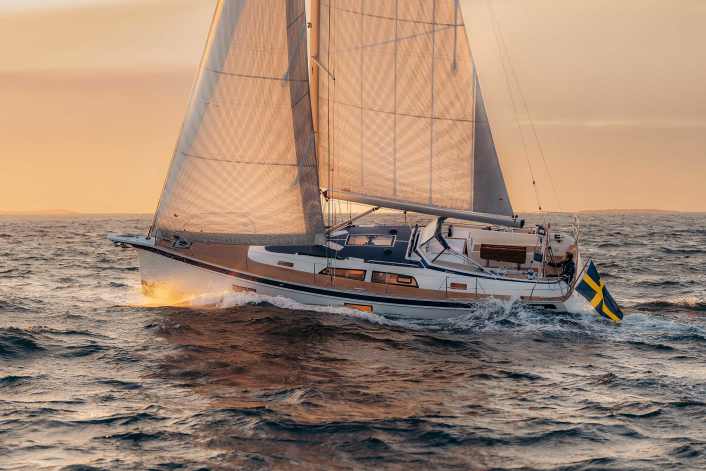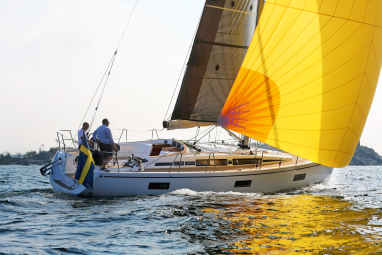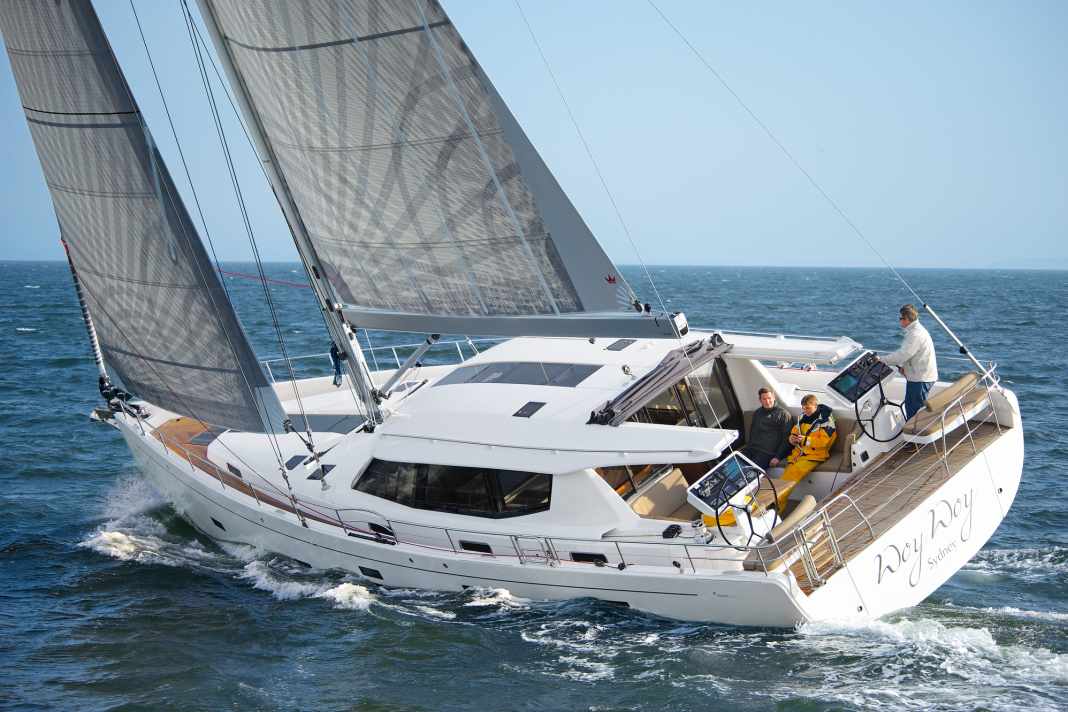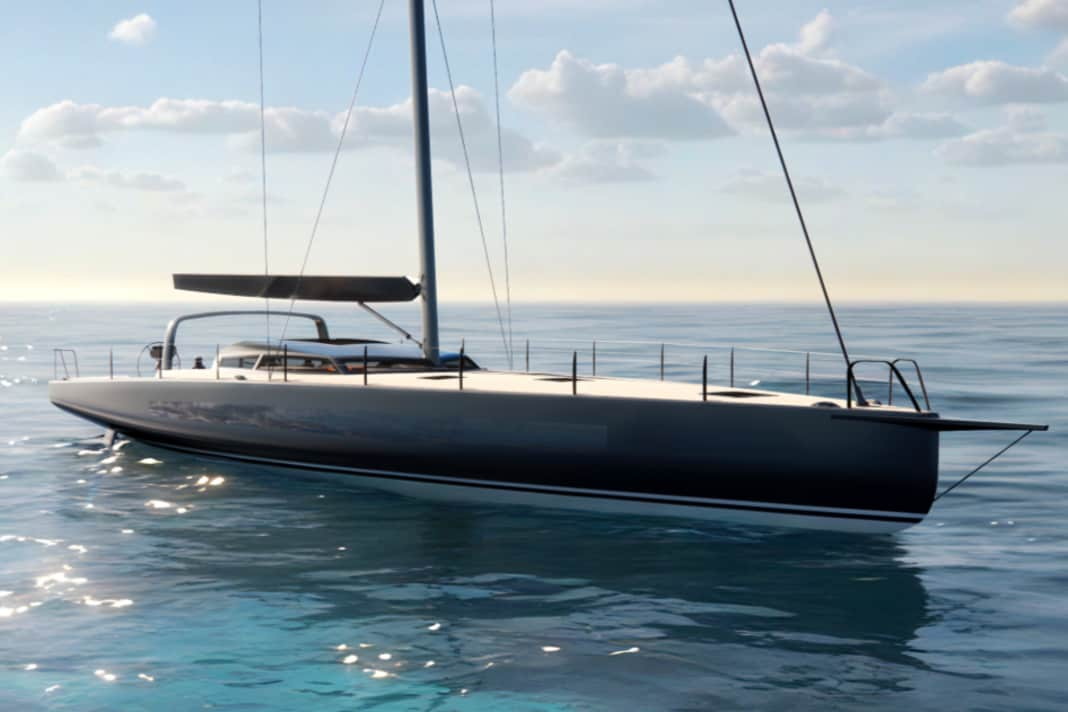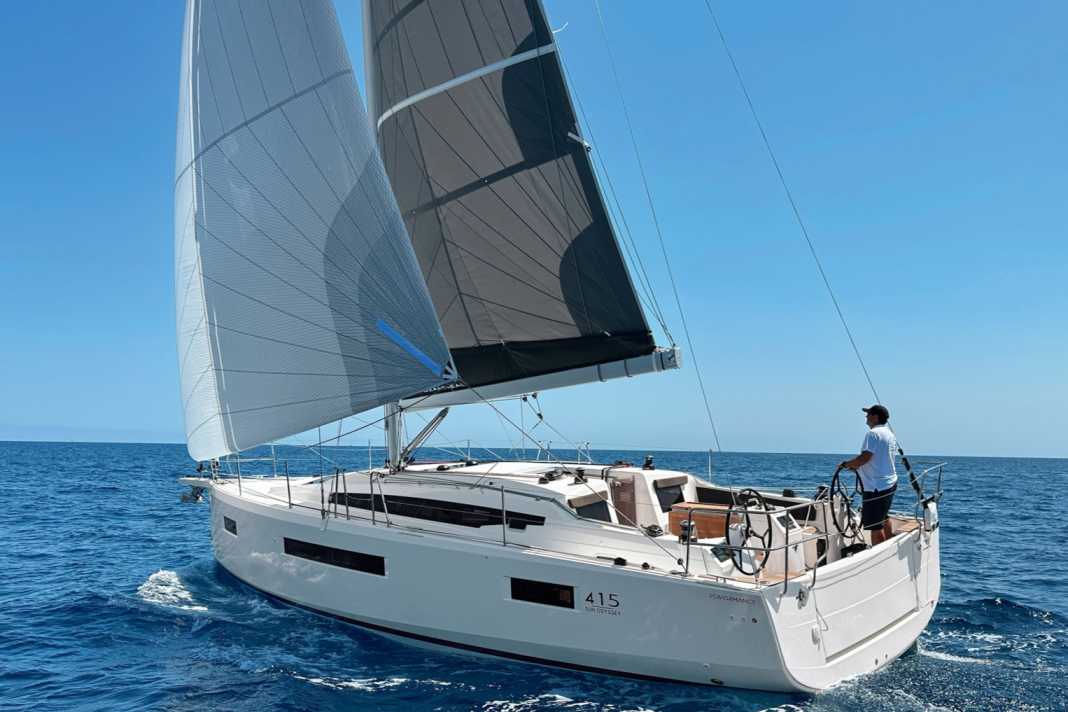Cruising yachts - the best conditions for a long cruise
A cruising yacht is ideal for going on a long voyage. It allows you to set sail as a circumnavigator, explorer and adventurer. However, blue water sailing is by no means the main purpose of cruising yachts. Cruising also means longer stays on the boat, with the greatest possible comfort and a high degree of self-sufficiency. Most cruising yachts are primarily used for holiday and weekend cruises, but also as a motor home on the water. Sporty cruising yachts are also used for regattas. These are known as performance cruisers instead of pure cruisers.
Cruising yachts offer a wide range of boats
Many Yachts deserve the designation "cruising yacht". There is no specific model range or narrowly defined specifications that define cruising yachts. In principle, any motor sailer, sailing yacht or explorer yacht can be a cruising yacht.
All cruising yachts have a cabin, and the safety precautions and comfort on board are designed for long journeys or extended stays on board. In addition, the vast majority of cruising yachts are designed as keelboats. The keel is made of iron, steel or lead, or a combination of these metals. The keel ensures high rigidity and capsize safety. An exception are the Cruising catamarans which provide the necessary stability due to their width.
Due to the wide range of possible uses for a cruising yacht, there are many differences between the boat types. These differences can be found in the behaviour under sail or under engine. This applies to the type of rigging, the sails and the Equipment as well as for handling and engine performance. Every yacht can be sailed and steered differently.
But there are also major differences between the various cruising yachts in terms of comfort and equipment, as well as in terms of crew size, whether they can be operated single-handed or with crew only.
The different types of cruising yachts- every taste is catered for
A basic distinction is made between the species:
- Motor yachts
- Sailing yachts
Motor yachts- Motorised cruising yachts
The terms motorboat or motor yacht are umbrella terms for all boats that are equipped with a Engine are propelled. They are used for leisure purposes and in many cases have a cabin that provides a certain level of living comfort. However, a clear distinction must be made here between a motorboat and a motor yacht. A motorboat is usually small and may be able to manage without a cabin. A motor yacht is different. They are usually over ten metres long and offer cabins for different usage options.
Sailing yachts - on a long voyage with the wind for propulsion
Boats with Sail are generally referred to as sailing boats. From a hull length of around ten metres, they are referred to as sailing yachts. A sailing yacht is usually a large and stable boat with a keel and a cabin. It is designed for longer stays on the water with the appropriate equipment. There is sufficient space below deck, which is divided into different areas. The saloon, galley, berths and toilet are the most important compartments.
Traditionally, sails are used for propulsion. There is also usually an engine on board, which is used for manoeuvring in the harbour and in calm conditions. While smaller sailing boats are often equipped with an outboard motor, larger sailing yachts work with a built-in engine. It is powerful and indispensable as an important technical feature, especially in the cruising yacht sector.
Modern cruising yachts and their equipment
The Equipment of cruising yachts must fulfil special requirements in order to be able to undertake boat trips over a longer period of time. The skipper must also have the necessary experience in relation to the cruising yacht and the area to be explored.
The crew should be optimally selected, as teamwork is often necessary for safe sailing. Whether it is a small yacht or a large cruising yacht is of secondary importance.
Special attributes are required for a cruising yacht to be usable as a blue water yacht. The equipment features include
- CE classification A
- GPS receiver
- Fire extinguisher
- Life jackets
- Signal flag set
- First aid kit
- Life raft
This list is not exhaustive, as the equipment includes much more equipment, but is merely intended to serve as a mental aid when equipping a cruising yacht.
Luxury is not necessary, but comfort is
Every water sports enthusiast likes to indulge in amenities on board. However, a little more comfort is usually desired, especially for blue water yachts. Not only from circumnavigators and adventurers, but also from families.
The yacht is travelling over a long period of time during long-distance sailing. The more space on board, the better the crew's needs can be met.
A separate berth for each crew member, storage space, a toilet room for hygiene, a large pantry for catering and a reliable power supply, for example by means of solar panels, may not seem like luxury at first glance. However, anyone who has spent a long time on the water without these features will consider even these modest amenities to be a luxury.
Air conditioning and heating are more on the luxury side. So everyone can Weather situation must be defied. The same applies on deck: if there is little protection available, the day can become a burden. If, on the other hand, there is protection against the weather conditions, which can sometimes be somewhat difficult during a long journey, such as a sprayhood, this normal equipment feature can be perceived as a luxury.
Whether luxury or not - a generous fresh water tank is also very important for cruising yachts. This is the only way to complete long journeys with blue water yachts without going ashore. And whether under sail or fully motorised - a sufficiently large fuel tank is also important for long journeys.
Charter- quite normal for cruising yachts
It is possible to hire a cruising yacht for a longer cruise. charter. It is advisable to search for a provider in the desired area. The possibilities for this are particularly good online.
You don't always have to head out into the open sea for a longer trip. In our latitudes, there are many beautiful areas that are suitable for longer stays on the water. The inland waters of Mecklenburg and Brandenburg are worth mentioning. 85 per cent of the lakes are connected by canals or rivers. The Baltic Sea, the North Sea and the Mediterranean offer vast expanses and plenty of space for sailing adventures.
On inland waterways, it is mainly motor yachts that are chartered. However, there are providers who specialise in sailing yachts. On the German coasts, chartering is possible in Heiligenhafen, Warnemünde, Bremen, Stralsund or on Rügen.
Some of the providers operate bases in Germany, but are also active worldwide and maintain co-operations with foreign providers. Regions such as Croatia, Greece, France, Italy, Spain and Turkey are particularly popular.
But there are also many very small providers, private individuals who offer sailing trips on their cruising yachts.
In addition to the classic chartering of a yacht, it is also possible to charter a yacht with a crew. The size of the crew depends on the size of the yacht and your own abilities. Most often, only a skipper is booked, who does most of the work, but is often also dependent on the help of the crew. Other charter yachts have additional deck staff and possibly service staff, depending on the size, luxury and lifestyle. The offers are very diverse. Again, it is important to compare carefully and check what is required.
Leading manufacturers in the cruising yacht sector
There are various Shipyards and manufacturers who produce cruising yachts. The buyer defines the price based on the size, build quality and equipment. Some shipyards allow a great deal of customisation of the interior and equipment, and these usually produce smaller quantities. Less variance is usually possible with large series shipyards.
The design options relate not only to the selected woods and berth types, but also to the galley, the saloon, the colour of the surfaces and fabrics and much more.
Leading manufacturers for cruising yachts include:
- Hanseyachts
- Bavaria Yacht Building
- Elan Yachts
- Jeanneau
- Beneteau
- Dehler
- Hallberg-Rassy
The cost of a cruising yacht
Charter or own your own yacht? A question that can also be answered by the costs involved. It is therefore important to carefully consider in advance whether owning your own yacht is worthwhile in terms of frequency of use and whether you can afford the costs.
The price of a new purchase can range extremely widely. Small cruising yachts with basic equipment are available from as little as 150,000 euros. Larger cruising yachts with lots of luxury and comfort can cost well into the millions. It is therefore not possible to give a fixed price. Your own taste, size and equipment will determine the purchase costs.
However, it is not just the purchase costs that should be considered. The annual maintenance costs are also important.
There is a guideline for maintenance costs that is based on decades of experience. It states that the maintenance costs per year for a yacht are generally ten per cent of the new price. The maintenance costs are made up of six different components.
These modules are:
- Mooring costs in the summer and winter seasons
- Watering in and watering out
- Boat insurance
- Maintenance and Care
- Repairs and acquisitions
- Fuel costs and gas costs
The maintenance costs for moorings in summer and winter vary depending on the area. There are very expensive marinas that charge up to 30,000 or 40,000 euros per year for moorings. In contrast, there are inexpensive marinas that charge just a few hundred euros a year for moorings in the summer months. For the winter months, you then have to decide whether you want to store your boat outside or in a hall, ideally frost-free.
Insurance is manageable compared to the mooring fees. However, there may be other additional costs, such as a boating licence for beginners. Or boat maintenance, which can sometimes cost several thousand euros per year.
The costs of chartering, on the other hand, must be calculated very precisely. They are made up of the weekly price for the yacht, insurance such as skipper's liability or deposit insurance, fuel costs, final cleaning of the yacht and similar. Added to this are the costs for catering and fuel if a lot of motoring is involved. But that's it, there are no more incalculable costs. But you only have the cruising yacht for the duration of the charter, you can't just go to the yacht at the weekend or feel like a little captain with your own boat.
In the end, you should always do the maths before buying a cruising yacht. Can the annual maintenance costs be paid? How often will the yacht be used, and is it worth buying or is chartering the better alternative?
Many water sports enthusiasts get to know and love sailing through chartering and later invest in their own yacht. The "trial and error" approach has proven to be very useful. So how about setting sail on a cruising yacht?
